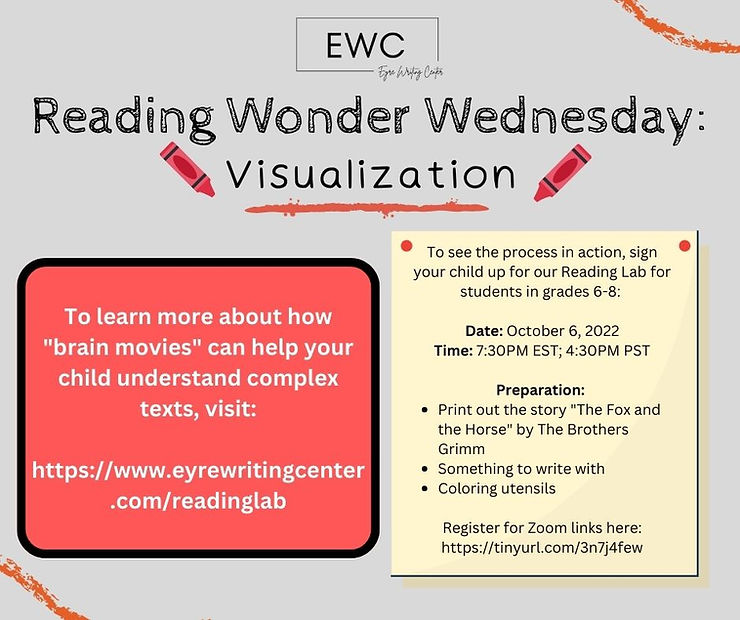Last week, we talked about the key to reading comprehension: building background knowledge. This week, we’re going to talk about the lock that opens the door to understanding: visualization.
Visualization is our brain’s way of letting us know that we comprehend a text. If we can see that awesome movie in our head as we read, the characters jumping off the page, the details of the setting filling our minds, then we know that our brain is processing the meaning of the text.
Research supports that when we can create an environment in which we support our young readers in seeing these “brain movies,” a complex text can be made easier, and the information they have read will be more meaningful as well as memorable.
Sometimes, though, seeing “brain movies” can be difficult, especially when a text is a bit above our child’s reading level. So, what do we do then? Introduce this process:
- Break up the text into manageable chunks.
- As the child reads, they should underline or highlight important actions or visual details
- Using these highlights and underlines, they should do something creative that helps spark that image-making process in the brain: i.e. use Playdoh to sculpt what is happening, doodle, make a cartoon, or construct a puppet show.
What’s great about these strategies is that many students don’t realize they are doing tough work to make this process happen, and by the end of the process, they have a product that can not only help them comprehend the text, but it can help them to summarize what they have read.
We sometimes forget that our older students can have fun reading, too! Even though they’ll be encountering more multi-faceted, complex texts, there are ways to make the process engaging for everyone!
See the graphic below for details, and sign your child up for our next reading lab if they are in grades 6-8 on Thursday: https://tinyurl.com/3n7j4few











